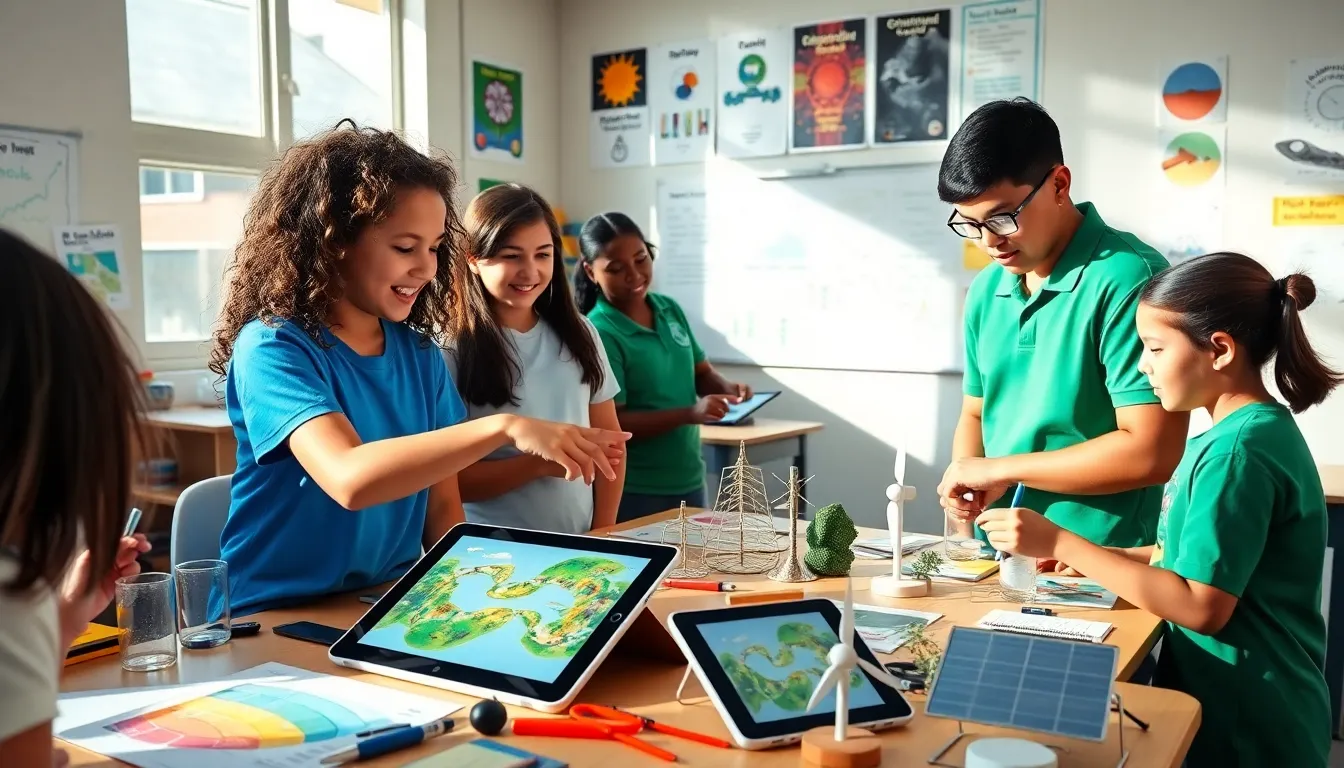Table of Contents
ToggleIntegrated science education is a progressive approach that aims to bring together various scientific disciplines into a cohesive learning experience. In recent years, this method has gained traction due to its holistic focus on problem-solving and critical thinking, elements essential for today’s learners. Redwebzine, as a potential innovator in this educational landscape, offers exciting opportunities to explore how integrated science education can shape future curricula. This article delves into the essence of integrated science education, the role of technology, its benefits, challenges, and successful case studies, eventually envisioning the future for Redwebzine’s educational initiatives.
Understanding Integrated Science Education

Integrated science education transcends traditional subject boundaries, merging biology, chemistry, physics, and earth sciences. Instead of teaching each discipline in isolation, this approach emphasizes connections between different scientific fields, helping students to understand the interrelated nature of science. For example, climate change studies can incorporate meteorological data, geological impacts, and biological responses, allowing students to gain a comprehensive perspective.
This type of education fosters a deeper understanding of scientific concepts and encourages students to apply their knowledge in real-world contexts. By engaging learners in a more meaningful way, integrated science education promotes curiosity and a genuine interest in science.
The Role of Technology in Science Education
Technology plays a pivotal role in modern science education, especially in integrated curricula. Tools such as virtual labs, simulation software, and data analysis programs allow students to experiment with scientific concepts without the constraints of physical lab resources. For instance, simulations can mimic complex ecological interactions or chemical reactions, providing learners with hands-on experiences that would otherwise be impossible in a classroom setting.
Also, online platforms help collaborative projects and information sharing among students across the globe. This creates a rich, interactive learning environment where students can engage with diverse perspectives and data, fundamentally enhancing the integrated science experience.
Benefits of an Integrated Approach to Science
The integrated approach to science education offers numerous benefits. Firstly, it promotes critical thinking by encouraging students to tackle problems from multiple angles. This method cultivates a mindset where learners consider how different scientific principles interact, fostering innovation and creativity.
Secondly, integrated science education enhances student engagement. By connecting scientific concepts to real-life situations, students are more likely to find relevance in their studies. Also, collaborative projects that merge different scientific disciplines can create a sense of community and teamwork, skills essential in today’s workforce.
Finally, this approach prepares students for higher education and careers in STEM fields. By understanding the interconnectedness of various scientific disciplines, students develop essential skills that are highly valued in advanced studies and professional environments.
Challenges in Implementing Integrated Science Education
Even though its advantages, implementing integrated science education can present several challenges. One significant barrier is the traditional structure of educational institutions, which often prioritizes standard subject teaching. Adapting to a more integrated curriculum requires rethinking assessment methods, teacher training, and resource allocation.
Besides, educators may struggle to find appropriate materials and resources that align with an integrated approach. Developing a curriculum that effectively balances the depth of content across various disciplines can also be daunting. These challenges necessitate support from educational authorities and a shift in cultural perception towards integrated teaching.
Strategies for Effective Integration in Curriculum
To successfully integrate science education, several strategies can be employed. One approach is project-based learning, where students engage in long-term investigations that require them to use knowledge from different scientific fields. For instance, a project on renewable energy could encompass physics (energy transfer), biology (impact on ecosystems), and social sciences (economic implications).
Teacher collaboration is also crucial: interdisciplinary teams can design and carry out integrated lessons that reflect multiple scientific perspectives. Professional development programs that focus on integrated teaching methods will also empower educators, equipping them with the necessary tools and strategies.
Finally, incorporating community resources, such as local scientists or institutions, can further enrich the curriculum by providing real-world applications and insights.
Case Studies: Successful Integrated Science Programs
Examining successful integrated science programs can yield valuable insights. One notable example is the Science and Technology Entry Program (STEP) in New York. This initiative integrates STEM education with real-world applications, effectively engaging students from underrepresented communities in hands-on science projects that combine various disciplines.
Another example is the International Baccalaureate (IB) curriculum, which emphasizes interdisciplinary learning through its approach to science. Students explore scientific topics through projects that require integrating knowledge across different subjects, preparing them for college and careers in STEM.
These case studies demonstrate that with the right framework and support, integrated science education can lead to profound educational outcomes.
The Future of Integrated Science Education in Redwebzine
The future of integrated science education within Redwebzine looks promising. As educational institutions recognize the importance of interdisciplinary approaches, Redwebzine can play a significant role in developing and promoting innovative curricula. Leveraging technology as a cornerstone of its educational framework will enhance student engagement and help global collaboration.
Also, by fostering partnerships with local industries and research institutions, Redwebzine can ensure that its integrated science programs remain relevant and forward-thinking. Continued investment in teacher training and resource development will further anchor Redwebzine’s initiative, preparing students not only to understand science but to thrive in a complex, interconnected world.
Conclusion
Integrated science education represents a transformative approach to learning, emphasizing the interconnectedness of scientific disciplines. For Redwebzine, the potential to reshape educational experiences through this method is immense. By harnessing technology, embracing new pedagogical strategies, and learning from successful case studies, Redwebzine can create a robust integrated science curriculum. This will empower students to become critical thinkers and problem solvers, well-prepared for the challenges of the future.








